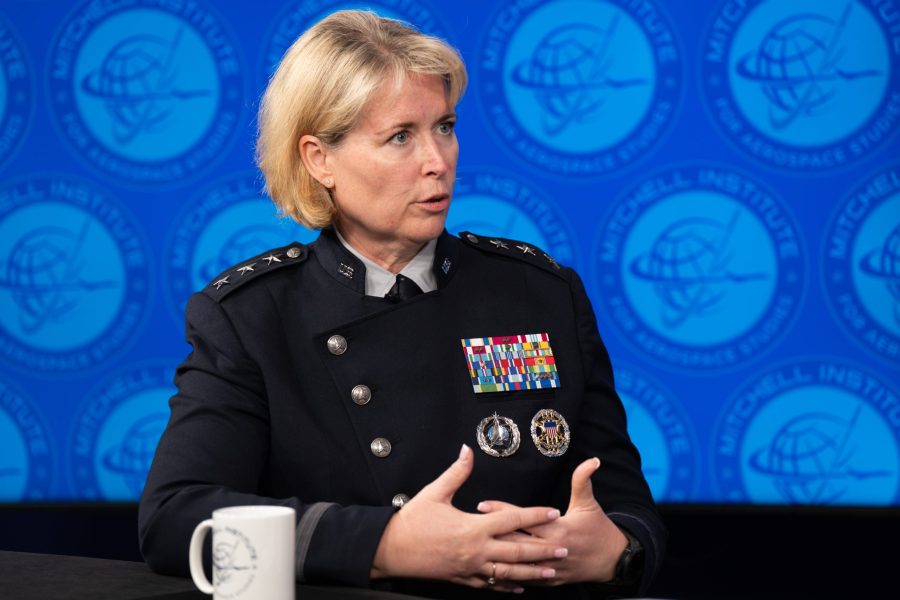Chief of Space Operations Gen. B. Chance Saltzman’s official portrait got a slight update in June that largely went unnoticed: His silver Space Operations Badge with its distinctive orbital rings and Space Force delta, vanished.
Now we know why. This week Lt. Gen. DeAnna M. Burt, the Space Force’s chief operations officer, revealed that the removal signals shift in Space Force culture and training.
Appearing Aug. 4 for an event at AFA’s Mitchell Institute for Aerospace Studies, Burt likewise had no Space Operations Badge, or the “Space Badge” as it was known before the Space Force existed. Traditionally, Guardians—and Airmen, before that—wore the badges while working space operation jobs, or those involving flying and operating satellites in orbit. They come in three versions, basic, senior, and command, and were authorized based on experience.
With the introduction of the new Space Force Officer Training Course last fall, however, every newly commissioned officer must complete a 12-month program where officers will be immersed in all the core knowledge Guardian leaders will need. That includes understanding space operations, cyber, intelligence, and acquisition, some of the service’s core career fields.
New graduates will be given a badge, still to be determined, that signifies their completion of the course.
“One of the things we’ve tried to do as a service is we want Guardians to identify as operators and warfighters,” Burt said. “And how do you do that? You teach them the full playing field of what entails operations—cyber, intel, acquisition, and space operations. All of that comes together to do operations.”
Think of it as creating “Guardians first, specialists second,” the Space Force notes in a release.
Just what the first OTC graduates will wear upon completing the first course next month is still not clear.
“We have a [general officer] conference next week on the determination of what that interim badge will be,” Burt said. “And then the follow-on: We’re working with the current class to decide, how do we design what they wear on the uniform to identify they completed the Officer Training Course?”
This much is clear, Burt said: “They’ll all wear the same badge as they come out of the Officer Training Course.”
Just as the Marine Corps awards both newly trained enlisted people and officers the iconic Eagle, Globe, and Anchor insignia upon completing their first level of training as a means of signifying that they’ve earned the title “Marine,” the Space Force is aiming for something similar.
“You are a Guardian,” Burt said. “You are an operator. Now that doesn’t mean you’re not going to specialize down the road in intel, acquisition, or space. You may do those things, but you understand the full waterfront of operations and what it means. And those are certifications. Those don’t necessarily have to be badges. That’s all still to be determined.”
Saltzman said in December that Guardians must see themselves as warfighters, not simply support personnnel. “Can you imagine telling a Marine that they’re not a warfighter or that the Marine Corps is just a force provider?” he asked. “Absolutely not. ‘Every Marine a rifleman,’ after all.”
Burt said the Space Force hasn’t done away with occupational badges, but rather that she and Saltzman are leading by example.
“As general officers, Gen. Saltzman put it out to us,” she said. “You’ll notice on his official photo, he no longer wears his badge either, and I followed suit as well as the lead operator, because again, it’s the right thing to do, and it’s what we are about.”
While an OTC badge is coming, the Space Force’s service dress uniform is also nearing its full rollout after nearly two years of wear testing. Burt, sporting the uniform as a wear tester herself, suggested Guardians won’t have to wait long into 2026 before the service officially adopts the new threads.
“We expect to roll the uniform out in early spring, January, February timeframe to all Guardians, and then we will have a full instruction that talks about exactly how you wear the uniform,” she said.


